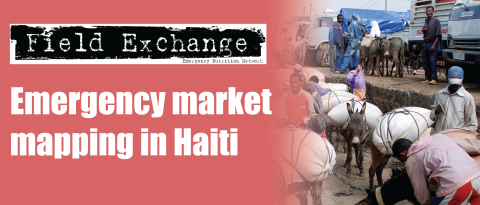Challenging the accuracy of ‘hungry’ figures
Summary of published research1

Emergency food distribution in Agok, Sudan.
A figure of 850 million hungry people on the planet was cited at the G8 summit in Tokyo in July 2008. However, the accuracy of such public statements is rarely scrutinised. A recent article in the Lancet challenges the technical basis of such claims.
The above figure and indicator most frequently cited for the magnitude and severity of hunger is the Food and Agriculture Organisation's (FAO) proportion of the population undernourished. The indicator is also used to monitor the progress towards Millennium Development Goal 1 (MDG1). The figure has been questioned in terms of inadequacy of adjustments for calorie requirements. However, the Lancet article levels more serious criticisms at the estimate. The fact that the data are derived from food availability data is the main problem. This is a macro-economic indicator based on national food balance sheet analysis and therefore tells us nothing about the hungry, e.g. who they are, where they are and how they look.
Another frequently cited indicator is the prevalence of underweight children under 5 years of age, which is also used for monitoring the progress towards MDG1. The author acknowledges that this is more meaningful in that it is derived from actual measurements of individuals. However, there are still three types of limitation. First, malnutrition is not caused exclusively by household food security but also by other factors, e.g. disease, inappropriate feeding practices. Therefore, there may be false positives, i.e. those underweight but not hungry or food insecure. Second, since there is an obvious lag between becoming hungry and then becoming underweight, the indicator lacks time-sensitivity. Third, the indicator overlooks a parental behaviour common across countries: parents tend to ensure food for their children by reducing their own portions. The prevalence of underweight children cannot be extrapolated to an estimation of hunger in older age groups because of this risk of underestimation.
According to the author, the proportion of the population below the national poverty line for food can also be used as a proxy indicator for hungry people. This is generally defined as the expenditure needed to purchase the food basket that meets the country-specific minimum calorie requirements for an individual. However, the indicator is not readily available across countries, probably because of the lack of standardisation in defining the food basket.
The author also points out weaknesses in definitions of food security and the lack of a threshold and concludes that hunger will continue to be relevant after 2015 (the target year of the MDGs) and that appropriate indicators for hunger need urgent reconsideration. As the author puts it "the moment this is being read, someone, somewhere in the world is becoming hungry and that person must be counted."
1Aiga. H (2008). How many people are really hungry? www.thelancet.com, vol 372, October 18th, 2008
Imported from FEX website


